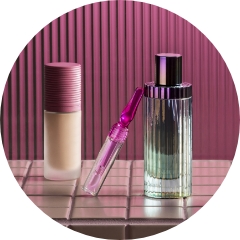The rise of self-care
Modern life can leave us feeling frazzled. Whether we’re worrying about work, money or that never-ending to-do list, it’s no surprise millions of us are reflecting on our self-care routines, including how we eat, sleep and prioritise our mental health.
So, what exactly is behind the unstoppable rise of self-care? We asked 2,000 UK adults to share their thoughts.
- People in the UK spend an average of £74.24 per month on their self-care needs.
- Leeds is the highest spending self-care city (£92.35 per month) while Norwich has the lowest spend (£47.49).
- Young Millennials (25-34 year-olds) have the highest monthly self-care spend (£108.88) while Boomers (over 55s) have the lowest (£51.18).
- Healthy eating and nutrition is Britain’s number one self-care priority, with 37% of respondents naming it as a primary objective. People in Bristol (46%) were the most likely of any city to choose this option.
- Women were more likely than men to view self-care as a ‘necessity’ – 43% versus 35%. However, men told us they spend more than women on self-care per month – £84.75 versus £65.59.
Self-care goals
If you sometimes feel blue or burnt-out – you’re not alone. Here are some ideas from our survey on how we can all protect ourselves.
In Bristol, nearly one in two people (46%) said they prioritise healthy eating and nutrition – the highest of any city. Meanwhile, Sheffield had the highest percentage (26%) of people who use mental health practices, such as mindfulness, therapy and journalling, as a self-care tool.
They say ‘you are what you eat’, and our survey found that older people are perhaps the most likely to take this mantra to heart. 44% of Boomers (over 55s) put ‘healthy eating and nutrition’ as a top self-care priority, compared with 21% of Gen Z (18-24-year-olds).
In contrast, 28% of Gen Z selected skincare and beauty routines as a self-care priority, while just 12% of Boomers chose this option.
The care necessities
Whether we’re keen to reduce our stress levels or perform tasks more efficiently, there are lots of good reasons to set ourselves self-care goals.
But do we see self-care as an absolute must or a nice-to-have? Overall, respondents were more likely to say that self-care is becoming a ‘necessity’ (39%) rather than a ‘luxury’ (26%), while 27% said it’s neither.
But in truth, opinions were split across the generations.
Among 18–34-year-olds, the majority (38%) view self-care as more of a luxury than a necessity. In contrast, most Millennials (44%), Gen X (43%), and Baby Boomers (37%) believe self-care is increasingly becoming a necessity.
Women were more likely than men – 43% versus 35% – to view self-care as a necessity, and also more likely to see it as a luxury (26% versus 25%). That’s because 30% of males said they view self-care as ‘neither a necessity nor a luxury’, while just 23% of females expressed this opinion.
Barriers to self-care
The path to self-care doesn’t always run smooth. And for many of the people we polled, indulging in self-care isn’t always straightforward.
The top barriers to self-care are financial difficulties (25%), closely followed by time constraints (24%) and lack of motivation (24%). Other significant factors include prioritising others (18%), physical restraints (16%), and being unsure where to start (14%).
Overall, 30% said they face no self-care barriers, rising to 46% among Boomers.
But this was by no means universal. Among those whose spending on self-care has decreased, 46% said they’ve “prioritised other expenses” while 30% said they’ve been “focusing on self-care that does not cost money or is cheaper”.
And regionally, people in the South West were the most likely to say ‘financial difficulties’ (31%) are their biggest self-care barrier, while the East Midlands had the highest response rate for ‘lack of motivation’ (31%).
With this in mind, we wanted to explore the impact of wellness on our wallets.
The cost of self-care
Whether we’re renewing a gym membership, or sneaking off to the beauty salon, it’s fair to say that self-care comes at a price.
A minority of people (29%) told us they don’t spend money on self-care. As for the rest of us, we spend an average of £74.24 per month on our self-care needs.
- Men spend more than women on self-care – £84.75 versus £65.59 per month.
- Regionally, people in Yorkshire and the Humber have the highest monthly self-care spend (£97.70) while those in the South West have the lowest (£57.93).
- Leeds was the highest spending self-care city (£92.35 per month) and Norwich was the lowest (£47.49).
- The highest spending age group was Young Millennials (£108.88 per month) and the lowest spending were Boomers (£51.18).
Even in these belt-tightening times, for many of us, self-care spending is worth every penny.
While less than a fifth (19%) of respondents said they’ve increased their self-care spending over the past year, among Young Millennials (25-34-year-olds) the figure was much higher (41%).
And while Wales was the region where people were most likely to say their self-care spend had ‘decreased’ (18%), in Greater London, more than a quarter (27%) have spent more on satisfying their self-care needs.
Self-care and socialising
There’s nothing selfish about self-care. The money we spend on feeling better isn’t just for our own benefit, but to enjoy our time with those we care about.
Interestingly, over one in five (21%) people in 2024 said they replaced a social or leisure activity with a self-care practice.
However, for most of us, self-care and social lives go hand-in-hand rather than competing. According to 85% of respondents in Brighton, we don’t need to choose between feeling good and having fun.
Enjoy some extra TLC
Life’s too short not to treat yourself once in a while. When it’s time to rejuvenate, explore the TK Maxx self-care beauty range. And for some added skincare inspiration, find out why skinfluencers swear by the 10-step Korean skincare routine.













